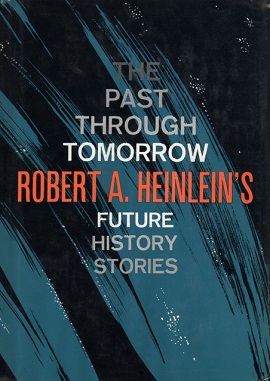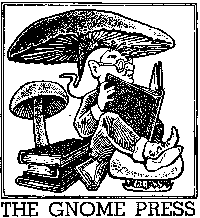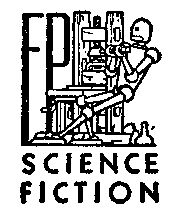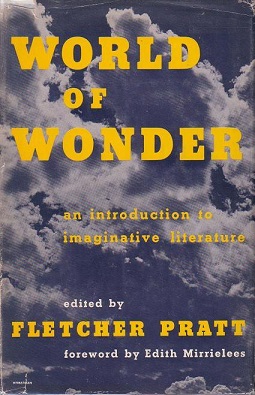
Robert Anson Heinlein was an American science fiction author, aeronautical engineer, and naval officer. Sometimes called the "dean of science fiction writers", he was among the first to emphasize scientific accuracy in his fiction, and was thus a pioneer of the subgenre of hard science fiction. His published works, both fiction and non-fiction, express admiration for competence and emphasize the value of critical thinking. His plots often posed provocative situations which challenged conventional social mores. His work continues to have an influence on the science-fiction genre, and on modern culture more generally.

Murray Leinster was a pen name of William Fitzgerald Jenkins, an American writer of genre fiction, particularly of science fiction. He wrote and published more than 1,500 short stories and articles, 14 movie scripts, and hundreds of radio scripts and television plays.
"Misfit" is a science fiction short story by American writer Robert A. Heinlein. It was originally titled "Cosmic Construction Corps" before being renamed by the editor John W. Campbell and published in the November 1939 issue of Astounding Science Fiction. "Misfit" was Heinlein's second published story. One of the earliest of Heinlein's Future History stories, it was later included in the collections Revolt in 2100 and The Past Through Tomorrow.
"The Green Hills of Earth" is a science fiction short story by American writer Robert A. Heinlein. One of his Future History stories, the short story originally appeared in The Saturday Evening Post, and it was collected in The Green Hills of Earth. Heinlein selected the story for inclusion in the 1949 anthology My Best Science Fiction Story. "The Green Hills of Earth" is also the title of a song mentioned in several of Heinlein's novels.
"The Menace From Earth" is a science fiction short story by American writer Robert A. Heinlein, first published in the August 1957 issue of The Magazine of Fantasy & Science Fiction.

The Green Hills of Earth is a collection of science fiction short stories by American writer Robert A. Heinlein, published in 1951, including short stories published as early as 1941. The stories are part of Heinlein's Future History. The title story is the tale of an old space mariner reflecting upon his planet of birth. According to an acknowledgement at the beginning of the book, the phrase "the green hills of Earth" is derived from a story by C. L. Moore.

The Future History is a series of stories created by Robert A. Heinlein. It describes a projected future of the human race from the middle of the 20th century through the early 23rd century. The term Future History was coined by John W. Campbell Jr. in the February 1941 issue of Astounding Science Fiction. Campbell published an early draft of Heinlein's chart of the series in the May 1941 issue.

The Past Through Tomorrow is a collection of science fiction stories by American writer Robert A. Heinlein, first published in 1967, all part of his Future History.
"Water is for Washing" is a science fiction short story by American writer Robert A. Heinlein, first published in Argosy. It is based on the premise that an earthquake had catastrophically shattered the range of alluvial deposits separating the Imperial Valley from the Gulf of California, precipitating a tsunami moving north to transiently drown these lowlands.

Gnome Press was an American small-press publishing company primarily known for publishing many science fiction classics. Gnome was one of the most eminent of the fan publishers of SF, producing 86 titles in its lifespan — many considered classic works of SF and Fantasy today. Gnome was important in the transitional period between Genre SF as a magazine phenomenon and its arrival in mass-market book publishing, but proved too underfunded to make the leap from fan-based publishing to the professional level. The company existed for just over a decade, ultimately failing due to inability to compete with major publishers who also started to publish science fiction. In its heyday, Gnome published many of the major SF authors, and in some cases, as with Robert E. Howard's Conan series and Isaac Asimov's Foundation series, was responsible for the manner in which their stories were collected into book form.
The science fiction writer Robert A. Heinlein (1907–1988) was productive during a writing career that spanned the last 49 years of his life; the Robert A. Heinlein bibliography includes 32 novels, 59 short stories and 16 collections published during his life. Four films, two TV series, several episodes of a radio series, at least two songs and a board game derive more or less directly from his work. He wrote the screenplay for Destination Moon (1950). Heinlein also edited an anthology of other writers' science fiction short stories.

Fantasy Press was an American publishing house specialising in fantasy and science fiction titles. Established in 1946 by Lloyd Arthur Eshbach in Reading, Pennsylvania, it was most notable for publishing the works of authors such as Robert A. Heinlein and E. E. Smith. One of its more notable offerings was the Lensman series.
The Heinlein juveniles are the science-fiction novels written by Robert A. Heinlein for Scribner's young-adult line. Each features "a young male protagonist entering the adult world of conflict, decisions, and responsibilities." Together, they tell a loosely connected story of space exploration. Scribner's published the first 12 between 1947 and 1958, but rejected the 13th, Starship Troopers. That one was instead published by Putnam. A 14th novel, Podkayne of Mars, is sometimes listed as a "Heinlein juvenile", although Heinlein himself did not consider it to be one.

Off the Main Sequence: The Other Science Fiction Stories of Robert A. Heinlein (ISBN 1-58288-184-7) is a collection of 27 short stories by American writer Robert A. Heinlein, including three that were never previously collected in book form.

The Menace From Earth is a collection of science fiction short stories by American writer Robert A. Heinlein. It was published by The Gnome Press in 1959 in an edition of 5,000 copies.

Beyond Time and Space is an anthology of science fiction stories edited by American writer August Derleth. It was first published by Pellegrini & Cudahy in 1950. Several of the stories had originally appeared in the magazines The Century, The Atlantic Monthly, The Strand, Blue Book, Blackwood's Magazine, Weird Tales, Amazing Stories, Astounding Stories, Maclean's, The American Legion Magazine and Startling Stories. A heavily abridged paperback edition was issued by Berkley Books in 1958.

Travelers of Space is a 1951 anthology of science fiction short stories edited by Martin Greenberg. The stories originally appeared in the magazines Planet Stories, Astounding SF, Thrilling Wonder Stories and Startling Stories.

World of Wonder is an anthology of science fiction and fantasy stories edited by Fletcher Pratt, published in hardcover by Twayne in 1951. No subsequent editions were issued.

My Best Science Fiction Story is an anthology of science fiction short stories edited by Leo Margulies and Oscar J. Friend. It was first published in hardcover by Merlin Press in November 1949, and reprinted in August 1950. An abridged paperback edition including twelve of its twenty-five stories was published by Pocket Books in July 1954 and reprinted in November 1955.













